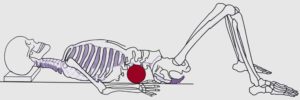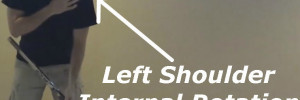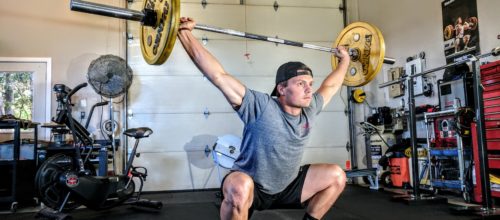
Not Everyone is Made to Squat Ass to Grass
You’ve probably heard the phrase “ass to grass” before when speaking with a local gym enthusiast, personal trainer or even read it in a fitness magazine. It’s a common phrase that many people may use when referring to a deep squat depth. Many people believe that a “true” squat involves squatting all the way to the floor, or for no better terms “ass to grass.” While it is impressive for someone to reach full depth in a squat and touching their “ass to grass,” it’s not practical for everyone to be aiming for. Some people may be putting their lower back at risk of injury (e.g., bulging disc) by going “ass to grass” (full depth squat).
To give an example, yesterday I had a client with multiple disc bulges (L3-L4, L4-L5, L5-S1) come in for an assessment. One of the assessments I did with this client was a simple bodyweight squat. In the video below, pay attention to the individual’s lower back as they reach parallel and below with their squat.
As you can see in the above video and photo below, the lower back rounds (lumbar flexion) as the individual’s squats below parallel. The lower back rounding is a compensation that traditionally occurs as a result of genetics (e.g., deep hip sockets that limit movement) or hip mobility restrictions (e.g., tight hips) as one tries to achieve further depth in their squat. Note: I can tell you based on the assessment yesterday with this client that it was not a hip mobility restriction. Also, while getting more depth in a squat may be good for some, I would not qualify this individual to be squatting below parallel or going “ass to grass.”
Incorrect Squat Form
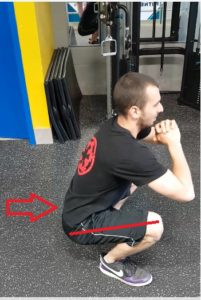
The red arrow represents the low back rounding (lumbar flexion). The red line represents the hips being below the knees.
Upon pointing this out to the client, he mentioned to me that he would always squat deep (below parallel and were his lower back rounds) and sometimes with load. He told me that he had heard going deep in a squat or “ass to grass” when squatting was the best thing to do. After hearing this from the client yesterday and looking at the multiple disc bulges that he had present on his MRI report, it started to become clear to me as to why he sustained these disc bulges too begin with. Repeated cycles of lumbar flexion combined with load will create a bulging disc over time if enough cycles are repeated (Callaghan & McGill, 2001). As you can see the client was performing repeated lumbar flexion under load, which is the exact mechanism for creating a bulging or herniated disc.
After explaining the negative outcomes to him of squatting below parallel or “ass to grass,” I corrected the client’s squat technique (photo below) and showed him what a “safe” squat depth would be for him. Note: This client is a drummer who has no intentions of moving into a sport such as powerlifting or Olympic lifting were squat depth plays a role in the sport.
Correct Squat Form
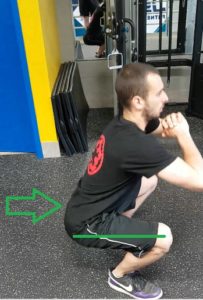
The green arrow represents a neutral spine position. The green line represents alignment from the knees to the hips.
In the above photo, we can see that he is about parallel in his squat and that his spine is in “neutral” and no lower back rounding is occurring. I would consider this a safe squat depth for this individual.
In summary, the point I’d like to make with this post today is that not everyone is made to squat deep or “ass to grass.” Often people will hear the term “ass to grass” and be encouraged to squat deep when they may not be qualified to do so (poor hip mobility) or don’t have the specific genetic structure to allow them to do this safely.
Not everyone is born to be a professional squatter.
Salute,
Remi
Reference
Callaghan, J. P., & McGill, S. M. (2001). Intervertebral disc herniation: Studies on a porcine model exposed to highly repetitive flexion/extension motion with compressive force. Clinical Biomechanics (Bristol, Avon), 16(1), 28-37.



